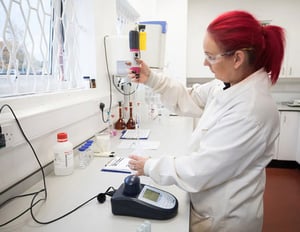PureTech Health plc (LON:PRTC), a clinical stage biotherapeutics company dedicated to discovering, developing and commercialising highly differentiated medicines for devastating diseases, has noted that its Founded Entity, Gelesis, today announced that it has received approval to market Plenity™, a novel weight loss treatment, in Europe. Gelesis received a Conformité Européenne (CE) mark for Plenity as a class III medical device indicated for weight loss in overweight and obese adults with a Body Mass Index (BMI) of 25-40 kg/m2, when used in conjunction with diet and exercise. Gelesis will now be able to market Plenity throughout the European Economic Area and in other countries that recognise the CE mark. Gelesis previously received clearance for Plenity from the US Food and Drug Administration and plans to bring Plenity to the US first, where it is now available to a limited extent while the company ramps up its commercial operations and inventory for a broad launch in 2021.
Eric Elenko, PhD, chief innovation officer at PureTech Health, said: “This is an important milestone for Gelesis and for the millions of adults across Europe who are seeking to manage their weight. We look forward to continued progress from Gelesis’ novel hydrogel platform and to the broad launch of Plenity across of the world.”
About Plenity™
Plenity™ is an oral, non-systemic, superabsorbent hydrogel which has received FDA clearance as an aid in weight management in overweight and obese adults with a BMI of 25-40 kg/m2, when used in conjunction with diet and exercise. It is made by cross-linking two naturally derived building blocks, modified cellulose and citric acid, that create a three-dimensional matrix. Plenity particles rapidly absorb water in the stomach and homogenously mix with ingested foods. Rather than forming one large mass, it creates thousands of small individual gel pieces with the elasticity (firmness) of solid plant-based foods (e.g., vegetables) without caloric value. The Plenity hydrogel increases the volume and elasticity of the stomach and small intestine contents and induces a feeling of fullness and satiety. Once it arrives in the large intestine, the hydrogel is partially broken down by enzymes and loses its three-dimensional structure along with most of its absorption capacity. The released water is reabsorbed in the large intestine, and the remaining cellulosic material is eliminated through the body’s natural digestive processes. Plenity is considered a medical device because it achieves its primary intended purpose through mechanical modes of action consistent with mechanobiology constructs.







































